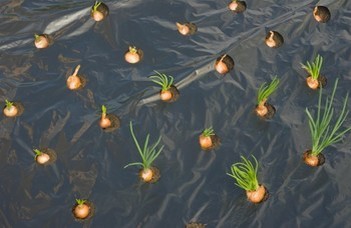Harmful plastic in agriculture

“Moreover, agricultural soils are generally more contaminated than urban soils. This makes sense if we consider that 2-4 percent of all plastics produced in the world are used in agriculture, which, based on data from 2019, represents 7–14 million tons,” writes the professor of the ELTE Department of Microbiology.
Wastewater treatment can only partially filter and remove microplastics from water. Therefore, the use of water in agriculture entails that its microplastic content also enters the soil. As the use of ground cover films is increasing due to the positive experiences the producers have with them, so is the contamination associated with their usage. Although the producers collect the foils from the ground, smaller pieces usually remain there and get shredded further.
Debris from tyres scattered near motorways also represents a major problem.
In Germany alone, 57,000 to 65,000 tons of tyre debris pollutes roadside areas every year. Furthermore, we also have to take into account sedimentation from the air, plastic pollution from busy roads, and the materials used to coat seeds that remain in the soil as secondary microplastics.
Some of the plastic pieces can penetrate the deeper layers of the soil. Unfortunately, climate change also contributes to the spread of pollution through more and more frequent and severe droughts. Plastic is later built into the cells of plants, inhibiting the germination of wheat seeds or causing a decrease in the yield of cotton, for example, but tobacco plants also ingest plastic particles. Similarly, it accumulates in the roots, shoots, and leaves of woody plants. In the case of earthworms and nematodes, histological changes could be observed, whereas, in mice, the liver lipid metabolism was disrupted.
“As in all other fields, it would be important to reduce the application of single-use plastic products in agriculture,” says Laura Jurecska. In the case of greenhouses, for example, polycarbonate or glass can be suitable alternatives. Concerning mulch films, degradable plastics would be a more advantageous solution from an environmental point of view, but only if they can truly decompose under the conditions of use. Furthermore, cover plants may provide a natural alternative for cover films.
Source: elte.hu

